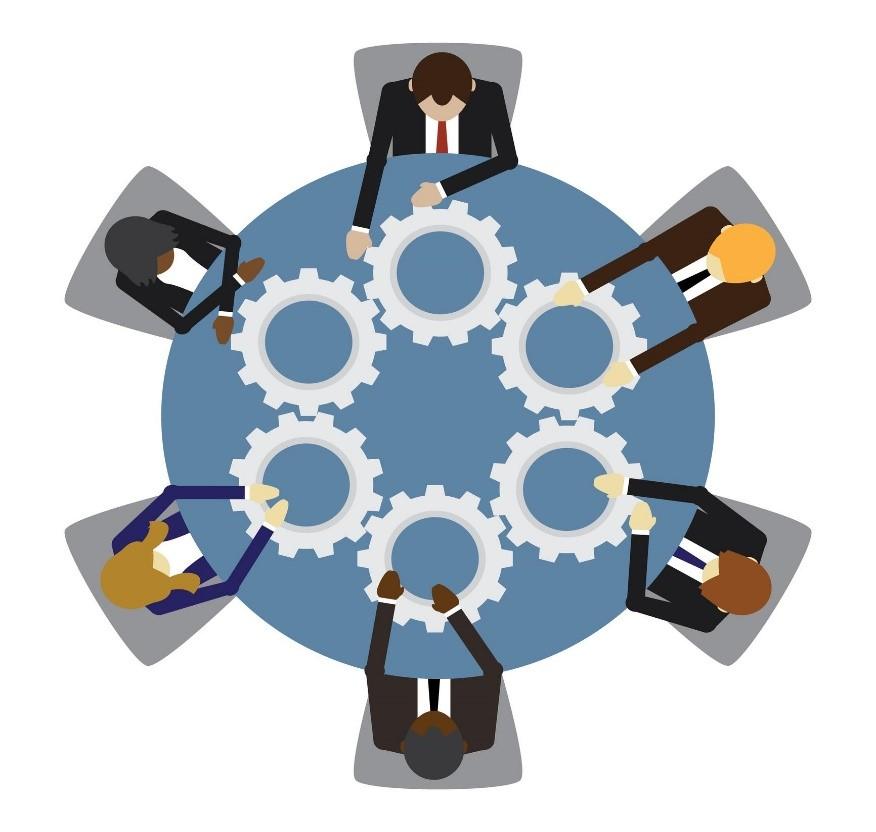Diversity, Equity & Inclusion - Beyond Branding: Why Organizations Need it?
The demand for transparency and social relevance has only intensified following the introduction of Diversity, Equity and Inclusion Programmes in organizations worldwide. According to a Survey at SHRM, staff exclusively dedicated to diversity in organizations rose from 13% to 15% in the past 10 years.[1]

With universally comprehended definitions, many still lack clarity on the difference between the terms Diversity, Equity and Inclusion.
Diversity refers to representation of different groups including gender, sexual orientation, race, ethnicity and culture, physical ability, etc. Equity on the other hand is equal access, opportunity and advancement for all these groups – ‘creating a fair playing field’ is how many would describe it. Inclusion focuses on building a supportive and collaborative environment to foster a sense of belonging and acceptance amongst individuals.
These three terms are often used interchangeably, though inherently different. Each component serves its own relevance in the current scenario. As organizations continue to expand their global presence, idiosyncratic interpretations emerge, further adding to the complexities of the existing processes.
“Ongoing collaborations with global partners, allow us to understand local compliances and practices that must be respected”, said Deepa Arora, the Head of Organizational Development at FarEye. These partnerships are essential to eliminate any assumptions regarding diverse groups and alter policies and processes based on factual and verified sources.
Introduction of an array of reforms has been noted across the globe. These best practices include Policy Reformation, Professional Development Opportunities, Sponsorship by the Leadership, Strategic Alignment with Business Priorities, Embedding D, E&I in people processes, Infrastructural Enablement, Governance and Evaluation, Resource groups, Empanelling External Diversity Coaches, amongst many, as identified by the SHRM Knowledge Centre.
Benefits of these best practices include, but are not limited to – low attrition rates, increased innovation, involvement and communication, improved return and a higher engagement rate. According to a research, returns on equity were 53% higher for companies in the top quartile of a diversity executive board, as compared to those in the bottom quartile.[2]
As reported by Shirley Davis, director of diversity and inclusion at SHRM global, a survey depicted that 55% of respondents feel that their organization ‘strongly promotes’ diversity and inclusion.[3] More than half of the respondents also reported that the main advocates for Diversity and Inclusion in their organizations are the CEO and Top Management. This research highlights a crucial aspect of D, E & I initiatives – the impact of such initiatives is directly proportional to the involvement, endorsement and advocacy of the top management portraying true commitment to the cause.
The success of these best practices is only fathomable when biased and discriminatory views are actively eradicated and challenged. The driving force here is usually the HR, for as per a SHRM research, 6% out of 59% companies surveyed named the Head of the HR as the Chief Diversity Officer.[4] Where in some cases, this can be seen as an obvious delegation, it does not yield much profit unless extended to the People Managers in the organization.
Involving People Managers permits them to leverage their experience as team leaders to introduce and promote the organization’s D, E & I initiatives. A formal yet candid discussion results where concerns and questions are efficiently dealt with, while avoiding upsetting or devaluing any individual’s opinions or emotions. Such delegations bring a certain ease to the tasks of implementation, review and advocation of reforms in the workspace, without inundating the HR professionals. Furthermore, these steps boost employee participation in ongoing initiatives as well as advocation of the new D, E & I principles in the organization.
“We follow a system where all employees across the board irrespective of their designation and position, can share their feedback and grievance. The employee can even choose to leave their feedback anonymously. Post collection, all members of the Senior Management, personally review each employee’s feedback, following which appropriate solutions are suggested and implemented expeditiously”, said Shashi K. Verma, the Vice President of Professional Services at FarEye.
Management participation for building an engaged culture is an established practice at FarEye. With the assistance of AI tools, manager’s scorecards are documented based on the ‘drivers’ that take into consideration each employee’s feedback. This process augments the existing feedback and review process as each manager identifies and examines the areas of concern within their team to work on the specific parameters, while paying ‘equal attention to all employees’.

A salient feature of the current D, E& I practice is the focus on women. The efforts aim to increase participation, involvement and benefits for these employees while providing sufficient impetus for job application. As per SHRM research, in a survey, 45% respondents report that their organization’s Diversity and Inclusion efforts are most strongly directed towards women.[5]
Creches, day-care facilities, Menses Leave, POSH and Whistle Blower Policy are some of the existing practices in organizations worldwide.
FarEye is determined to create a diverse team. They are currently working on ‘Tomorrow’s Leader program” where their aim is to identify and develop female employees to take on leadership roles. With ‘32% of women in leadership roles’, the management is contriving procedures and initiatives to improve this ratio.
Moving beyond the norm, many companies have rigorously reviewed and re-formulated standard policies, where Paternity Leaves, Adoption Leaves, the POSH Policy – all reflect a gender inclusive front. This is indispensable in light of the ongoing awareness campaigns and global efforts directed towards gender equality and justice. FarEye has successfully transformed their policies and culture to reflect the demands of different genders and sexual orientations.
The ‘new frontier’ in D, E & I initiatives today is the empowerment and involvement of blue-collar employees. Organizations are actively working towards building an all-inclusive front, where each employee can benefit from the various tangible and intangible reforms irrespective of their designation in an organization. With increasing reports of discrimination and harassment against these blue-collar employees, such efforts prevent alienation and employee turnover.
An example to elucidate such initiatives is equitable coverage for white- and blue-collar staff under all policies such as POSH, integrity issues, etc. Additional benefits extended to the blue-collar staff at FarEye comprise of equal access to creches and day-care facilities.
Inclusion and involvement of 3rd party blue collar contractual and delivery staff is another D, E & I initiative that FarEye is committed towards. ‘They are involved in festivals, celebrations as well as our rewards and recognition programme where gifts are extended to them’. The organization also provides them with additional benefits such as ESI and insurance.
“We work towards empowering employees by training and building awareness on the company’s policies such as POSH, Whistle Blower, and ongoing initiatives – all inclusive of blue collar and white-collar professionals”, said Deepa Arora. “Our vision is to be an equal opportunity employer and build a safe and reliable community for everybody”.

With change, challenges are inevitable. Significant impediments in achieving the D&I vision identified by SHRM include – low employee churn, financial limitations, internal resistance, legal frameworks, cognitive biases; where although explicit efforts have been consolidated, restrictions prevent installation of a large-scale structural change. Overcoming these hurdles involves preparing an action plan, frequent check-ins, structured and planned reviews, employee feedback and surveys, etc.
The driving forces for introducing D, E & I in the workspace are talent shortages and a diverse marketplace; where the ultimate motivators vary from moral considerations to business profitability. In this scenario, although companies have not responded immediately, many have indicated their plan to act in the near future as presented in a SHRM research in July, 2020.
Diversity, Equity & Inclusion involve celebrating individuality and authenticity. Today, transformation of company policies, review of the hiring slate, infrastructural changes are some common branding practices while promoting D, E & I at the workplace. Complementing these initiatives is the incorporation of key principles of diversity, equity and inclusion in the people processes of the organization such as the job descriptions, harassment policy, etc.
“We continue to learn and evolve with each collaboration and are working towards building a value system that increases opportunities for innovation while maintaining ownership and integrity in our practices”, said Deepa Arora.
Following up on these views, Shashi Kant said, “FarEye is a young organization, with open-minded professionals who are committed to our aim of creating a close-knitted, safe environment for everyone”.



